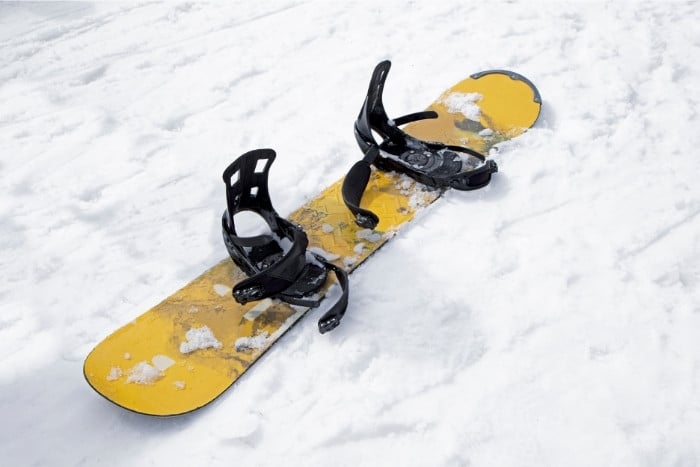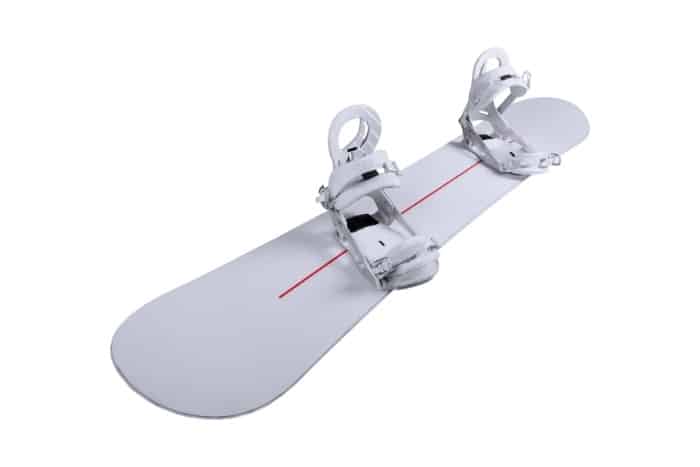When looking at a snowboard, it is often a challenge to not compare it to an old board, a friend’s board, or a board a professional rode on tv. Ads or owners may claim their board to be the best, and particular brands may have a reputation for quality boards, but does a better snowboard make a difference?
A better snowboard can make a marginal difference in performance, but a rider should look for a snowboard for the particular boarding style and conditions they’re looking to ride in. The best board is often not the hottest brand, but one designed for the conditions and rider preferences.
Your friend may swear by their brand’s board quality or their model in particular, but in reality, this may not make it better for all riders in all circumstances.
What Determines a Snowboard’s Quality?
A natural place to start when looking at if a snowboard is better than another or will make a difference is the quality of the board. With so many factors to consider, this is easier said than done.
Aside from the brand and style of the board, it is often beneficial to understand how well the board will react in certain environments or when performing specific actions and how long that snowboard will be able to perform those actions.
To rate a snowboard’s quality, we should consider both its performance and durability.
1. Durability
While a lot of snowboards may perform exceptionally well for the rider’s preferences, they may not last.
Park snowboards, especially those focused on rails and jibs, are often designed to be more flexible and reactive in quick situations.
These can have a great riding experience for the situation, but wrong moves or excess pressure can cause them to crack or even fully snap.
While you get a heightened experience in terms of performance with these boards, you lose out in terms of durability.
Two brands, Capita and Technine, come to mind when thinking about high performance with a loss of durability.
Their boards are often designed with this type of snowboarder as the target rider.
This is not to say all of their boards are built this way, but those with higher flexibility and reactiveness may not last as long.
My Technine board was amazing on rails for the time I had it. Flexible enough to lock into a press and enough pop to hit street-style down rails.
I broke it hitting a jump the first season I had it. The tail snapped off when landing back-seat, not maintaining the proper pressure distribution.
Those I’ve talked to with Arbor boards have spoken highly of the quality, specifically the durability.
When comparing boards, minor damage over years of wear and tear is certainly noteworthy.
Many of their models may run on the stiffer side, the opposite of a Capita or Technine, so performance in some situations may be less responsive.

2. Performance
Performance is where we really get into dependence on style, conditions, and preference.
The board I described above was excellent for elements of the park I wanted to ride, but where it fell short was runs where patches of ice were prevalent.
On ice, the flexibility can create unintended bends causing the need to fight the bounces to maintain an edge.
I prefer a more flexible board to a stiff one and a rocker to traditional camber, so I found it to be better, for my situation, than many other boards.
a. Style
Your riding style should determine what you find to be a better board.
You would never see a boarder-cross rider bring their racing board into the backcountry on a powder day.
While Olympic snowboarders competing have the best available equipment, it is the best for their particular situation.
If it does not fit the style of snowboarding a rider is involved in, then it cannot be categorized as the best snowboard.
One caveat is the growing trend of taking park laps with a powder board.
It is not the best board for what they are doing, but you will see it as it has become commonplace to demonstrate a rider’s ability in the park with a board not intended for that purpose.
b. Conditions
Similar to style, conditions can be a factor in determining what snowboard is better.
Camber boards are great for groomers, and a stiffer board can help if patches of ice are a factor of conditions for the day.
Additionally, having a directional board with a setback stance will help during power days but may not be the best for riding in the pipe.
c. Preference
At the end of the day, preferences do matter.
If a board is durable enough for the intensity of riding, works well enough for the conditions, and loosely fits the rider’s style, they may prefer it over another board.
I’ve had friends ride boards too long for their height or with a stance far wider than necessary, but it worked for them.
If the best board is dependent on the situation, a huge factor is the person controlling it. .
Brand Recognition
Often the first thing someone sees regarding a snowboard is its brand and graphic.
A graphic is easy to write off as a non-factor when measuring quality, but what about the brand?
The truth is, the brand itself often has little to do with the quality of the snowboard.
Many snowboards are made in factories in lower-cost locations and shipped to high-cost sales areas to make the most profit.
Brands like Yes, Arbor, and Jones, for example, are all made in the same factory in Dubai.
Even Burton ended production in their home state of Vermont in 2010, outsourcing to companies in Austria and China.
So while these boards are still going through a quality check before being sold, the brand itself may not be a driving factor of what is better or make the most impact on the rider.
It is hard to argue that YES or Jones boards would be better when comparing similar models, knowing they’re made in the same place, where the only difference between them is the specifications used to produce them.
Understanding the camber, twin design, and edges can help determine what would make more of a difference in your riding than the company selling it.
Technology Enhancements
Changes to snowboards based on new research and development often come into play in conversations of the best.
If the latest iPhone is the best, why wouldn’t the newest snowboard technology be as well?
As described above, it might be. It comes down to what the technology is, the situation it is used in, and ultimately preferences of the rider.
A past example is a flat camber, acting somewhat as a middle ground between rocker and traditional.
I didn’t see a flat camber board until around 2015, but once I got my first, I loved it.
My preference is my flat camber board, and I’ll shop for another, but claiming it to be the best for someone else may not make sense if they prefer rocker, traditional, or a hybrid of the two.
Burton’s new StepOn bindings also come to mind since these may be the most recent technological enhancement on bindings.
While they’ve gotten great reviews so far, been demonstrated in the park and in powder, and can work in all situations, their newness doesn’t necessarily make them the best.

Final Thoughts
There are many variables to consider when determining which snowboard is the best, but the most significant variable to consider is the rider.
While a board that fits your friend best may make a difference in their riding, finding what you are most comfortable on is paramount for your definition of best.
Comfort on the board goes the furthest in terms of beneficial differences in your riding, so ensuring that you’re familiar with how you want to ride, where you want to ride, and how you want it to feel can best inform your choices into what board is better.
